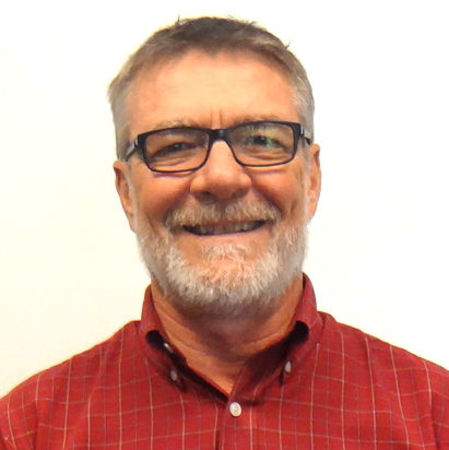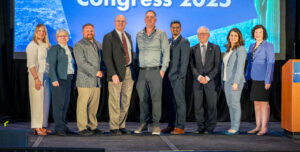
Peter Vickery is a Principal Engineer with ARA. Peter has over 40 years in the study of wind effects on structures and helped to develop ARA’s leading wind catastrophe model, HurLoss™. He has presented and defended the model before the Florida Commission on Hurricane Loss Projection Methodology successfully since 1999.
We caught up with Peter recently to get his thoughts on the hurricane forecasts for 2022, and other issues affecting catastrophe modeling.
Q: Peter, we are about halfway through the hurricane season (June 1–November 1) without any significant activity. Both NOAA and Colorado State University (CSU), leading Tropical Cyclone researchers who regularly announce seasonal predictions, have recently downgraded their initial forecasts while still maintaining that conditions for above normal activity persist. Another such agency, Tropical Storm Risk (TSR) has joined the other two in revising downward their initial estimate. How do you view the utility of these forecasts, do you use them in the modeling work you do?
We typically view these forecasts with some skepticism. The forecasts are largely based on the sea surface temperatures in the Atlantic Basin and the forecast strength of the El Niño/La Niña for the upcoming season. The recent downgrades were related to the lack of tropical cyclone activity to date (only three tropical storms).
We do not use these predictions in our modeling work. One reason being the exact landfall location is just as, if not more important, than the storm intensity. For example, a category 2 or 3 hurricane making landfall just to the North of Miami will produce higher losses than a category 4 storm making landfall in the Florida Panhandle.
It’s also worth pointing out that catastrophe models have been developed using long term statistics and are not really designed to be used with seasonal forecasts. However, users could use the regional landfall information given in the CSU forecasts to adjust their PML estimates using the ratio of the forecast landfall probabilities to the long term landfall probabilities, also provided in the CSU forecasts.
Q: There are obviously factors involved in the seasonal forecasting of hurricanes that are reflected in models, which as you point out, typically are taking a much longer view of the risk. Can you comment on some of these factors which we often hear cited by the forecasters: sea surface temperatures, La Niña. ENSO, west African monsoon, Saharan Dust, Atlantic Meridional Mode (AMM), Accumulated Cyclone Energy (ACE).
Let’s start with ACE, which is defined as the sum of the square of the maximum estimated one minute wind speed over the life of the storm (considering only wind speeds greater then 74 mph). The problem with ACE is that it does not consider the size of the storm like the Integrated Kinetic Energy (IKE) does. Generally, the higher the wind speed, the smaller the area over which the high wind speeds exist, and ACE does not consider this. Nevertheless, ACE is a parameter frequently used in the hurricane climatological literature.
Some of the parameters controlling hurricane activity, as defined by ACE, are sea surface temperature, low level vorticity, the average sea level pressure, wind shear (which is related to El Niño/La Niña). It so happens that the AMM is correlated with the same parameters which appear to control hurricane activity, and thus the AMM is a reasonable predictor of hurricane activity.
There is a strong positive correlation between the west African monsoons as the thunderstorms associated with the monsoons tend to “seed” the tropical cyclones, whereas Saharan dust storms tend to have the opposite effect, inhibiting the formation of the thunderstorms.
Q: Hurricane Andrew in 1992 famously caught everyone in the re/insurance business off guard, which gave rise to the catastrophe modeling business as we now know it. Can you comment on some of the other inflection points for the cat modeling industry, such as the “clustering” of events in 2004-2005 in Florida, or more recently the growing demand for cat models to reflect climate change?
After the 2004-2005 clustering of hurricane landfalls on the Florida Peninsula and along the Gulf coast, respectively, this phenomenon received significant attention by the modeling firms. Using historical data, ARA examined the landfall rates of hurricanes along various sections of the coastline and found that the distributions of clustered landfall rates have fatter tails than those associated if the landfall rates are independent (i.e., no clustering). From a meteorological point of view the clustering could be explained, but from a statistical point of view, most of the clustering in 2004 and 2005 could be attributed to chance.
Following the clustering events of 2004-2005, modelers also began to pay more attention to the cyclical nature of warming and cooling of the North Atlantic sea surface temperature (SST), sometimes referred to as the multi-decadal oscillation. ARA does have a warm SST (or near term) model to provide a nearer term view of risk in addition to our historical event based long term view.
Climate change has started to become a significant issue from the point of view of the insurance industry and the rating agencies. As Kerry Emanual pointed out at the OASIS conference held in London in 2019, the effects of climate change are already impacting the hurricane hazard in the Atlantic basin.
ARA’s modeling is addressing climate change in a dynamic way. The ARA hurricane hazard model was developed in such a way that our modeling can directly ingest Global Climate Models to reflect a view of climate change. Using environmental parameters that control the intensity of hurricanes, including wind shear, sea surface temperature and tropopause temperature, enables us to use Global Climate Models to produce hurricane hazard models associated with future, or current climates.
Q: In the nearly three decades that catastrophe modeling has existed, have you noted any changes in the modeling community, either developers, or users or intermediaries?
One of the biggest changes, led by ARA, was the introduction of the modeling of wind loss mitigation features (often termed secondary modifiers) and the ability to model the effects of building code changes in reducing losses. The customers of the models have certainly become savvier and like to test to see the effect that various features have on changing losses as well as comparing the losses for structures with different attributes in order to determine the reasonableness of the differences.
Q: Final take-away: any predictions for the remainder of the 2022 Hurricane season?
It’s still relatively early in the hurricane season considering that about 80 percent or so of the storms typically occur after mid-August, so we’ll have to wait and see.
Read more about ARA’s state-of-the-art hurricane catastrophe model at www.ara.com/hurloss




